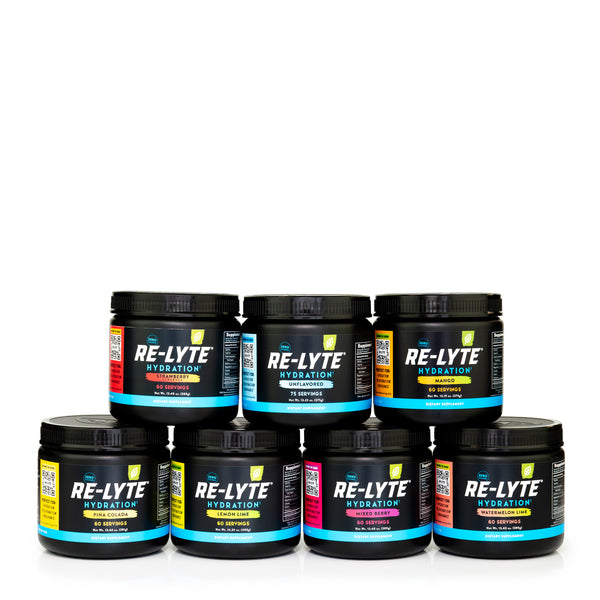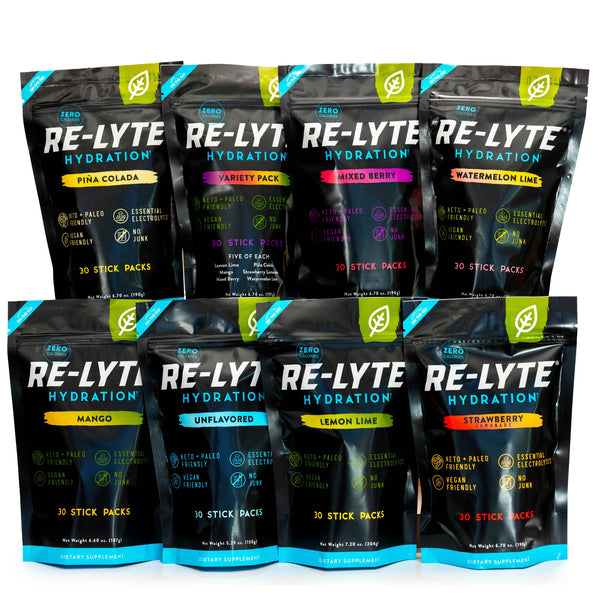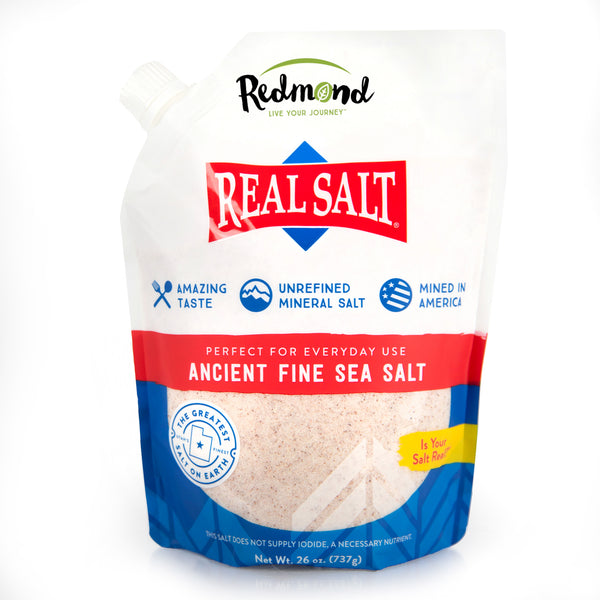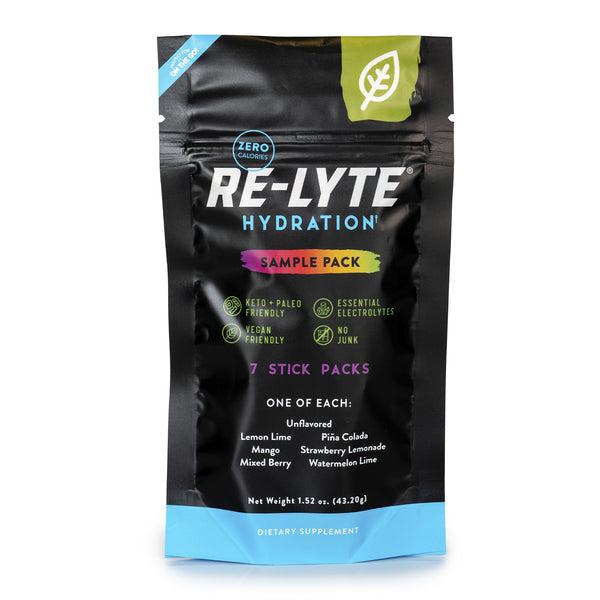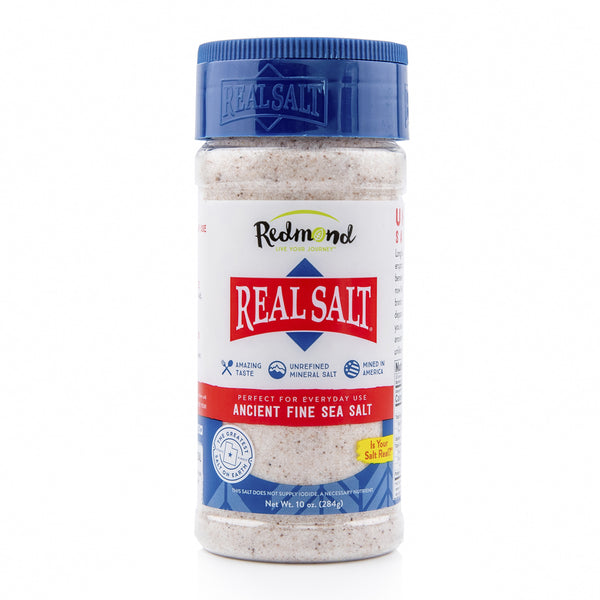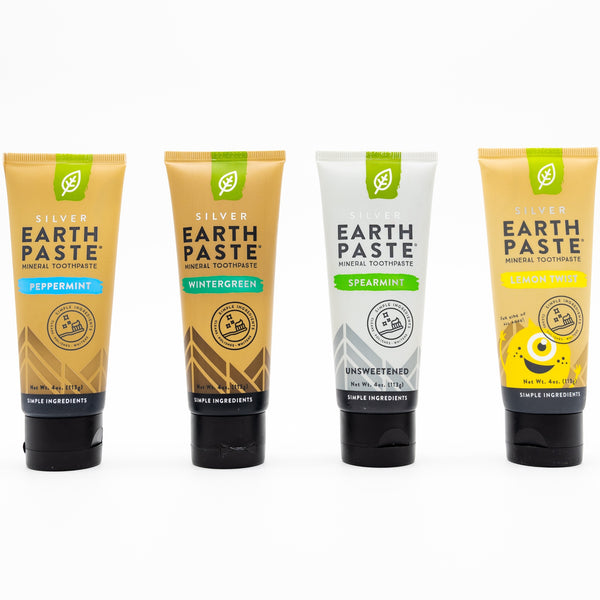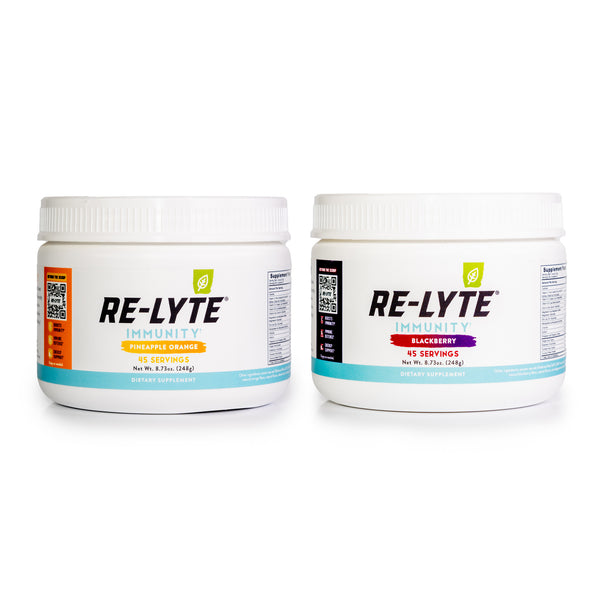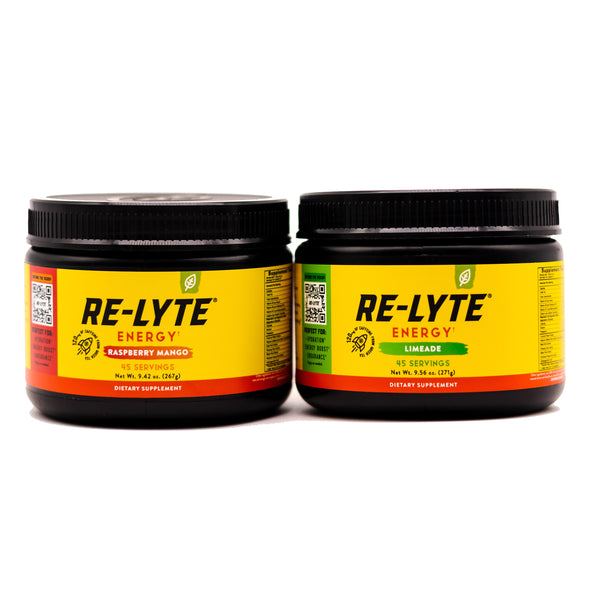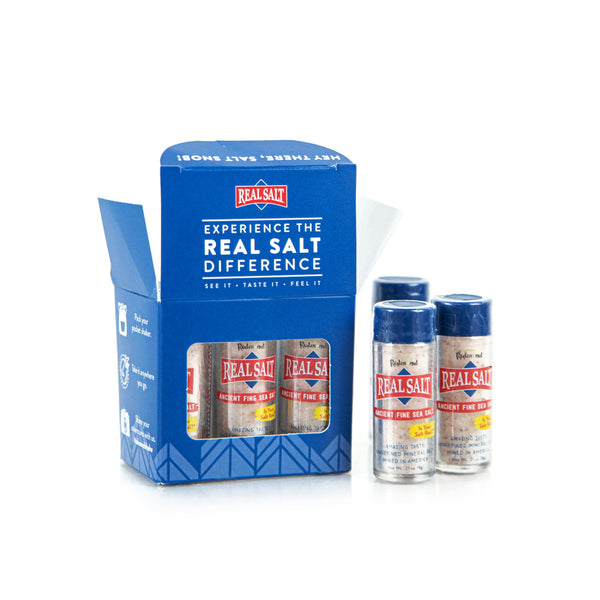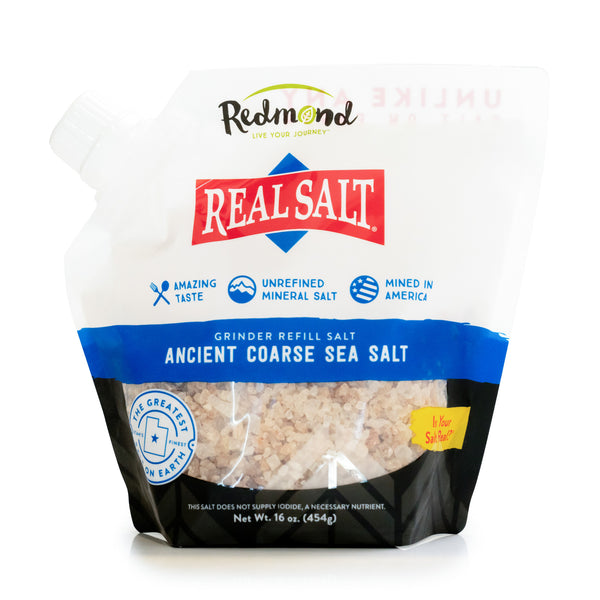Is Your Salt Real? Here’s How To Tell...
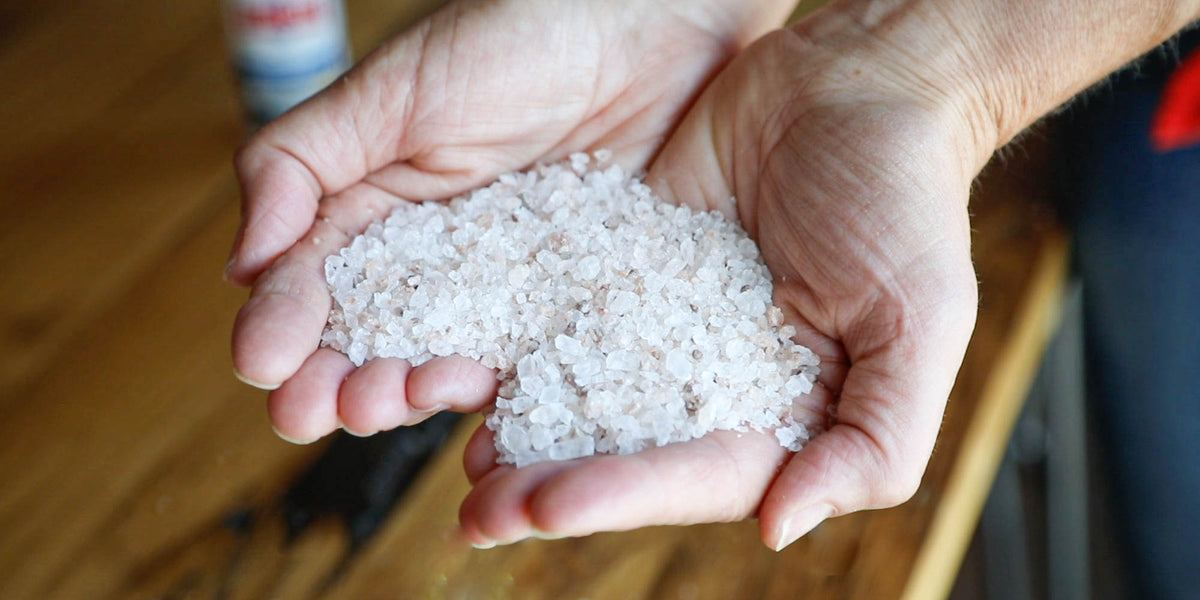
Article at a Glance:
- Processed table salt isn’t real salt because it’s refined, contains additives, and is stripped of naturally-occurring minerals.
- Even some sea salt is refined and/or contains additives, so isn’t truly real.
- If you want whole, natural, real salt, you have to pay attention to mineral content, look for additives, and watch out for colorless salt.
- It’s also important to get salt from a pollution-free source if you care about buying healthy, real salt.
Is your salt real?
That probably sounds like a silly question. Isn’t all salt real? Salt is just salt. But before you shrug the question off and go back to posting funny cat memes on Facebook, take a peek at the label on a package of table salt. What do you see? A lot more than just salt, right?
The processed table salts of the world contain a surprising amount of unsalt-like substances (a type of sugar called dextrose and anti-caking agents are two of the most common). Plus, processed table salts are stripped of naturally-occurring minerals. So, you’re left with a product that has unnatural ingredients added and natural components taken out.
In our (imaginary) real food rule book, the term “real” means something very specific. It means whole, complete, and intact. And processed table salt just doesn’t live up to this definition.
If you trust actual published books more than imaginary rule books, the Merriam-Webster dictionary defines “real” as being “precisely what the name implies.” And a lot of popular salts fail to live up to this definition too. Most people think that when they purchase a package labeled “salt,” they’re just getting salt— not salt combined with a bunch of other junk.
So, how do you know for sure your salt is real?
Let’s dive a bit deeper into what makes real salt (and more specifically, Real Salt®) different from the rest, so you can feel confident you’re getting the real deal next time you go shopping.
What Makes Salt Real?
So far, we’ve talked about processed table salt and how its “realness” is in serious question. How can something be real when it contains artificial additives and is stripped of healthy, naturally-occurring minerals? It can’t be in our humble (and maybe slightly biased) opinion.
But you may still be wondering: What about sea salt? Isn’t all sea salt natural and therefore real? It’s not quite that simple, unfortunately.
First off, we need to get clear on one fact— all salt is technically sea salt. Some salt is harvested from modern oceans, some from dead seas, and some is mined from ancient sea beds, but the sea is (or was) the original source of all salt.
Now, if you look at salts marketed as sea salts and salts marketed as table salts, you’ll notice that the sea salts seem to be less processed. They’re less likely to contain additives like dextrose and anti-caking agents. And they’re more likely to contain naturally-occurring minerals. But still, you can’t assume that just because a salt is marketed as “sea salt” it’s totally unrefined, natural, and (the word of the hour) real.
Even some sea salts have been refined (although, usually not as heavily as table salts), which means you’re missing out on trace minerals and eating additives that potentially aren’t great for your body. But if buying sea salt isn’t a surefire way to get your hands on some real, unrefined salt, what the heck is? Here are a few tips for savvy real salt shopping….
How Can You Tell if Salt Is Unrefined?
It doesn’t matter whether you’re shopping at a health food store, or the salt you’re buying is “sea salt,” or the packaging has a crunchy-granola vibe going on. Rule number one when buying real salt is never make assumptions in the salt aisle. Always read the label.
You want to look for a salt that’s unrefined, contains natural trace minerals, and has no additives. Luckily, it shouldn’t take you long to figure out whether you’ve found the real (salt) McCoy. People who make unrefined salt tend to be proud of that fact (we certainly are) and they like to mention it right on the front of the package.
When you look at the back of the package for ingredients and nutritional information, you should notice two things. Number one, it should mention minerals. Number two, it shouldn’t mention additives. If you see any ingredients listed on the label other than salt, like tricalcium phosphate, dextrose, or whatever other impossible-to-pronounce ingredient they’re using these days, run the other way (i.e., calmly put it back on the shelf, and look for a different brand).
Now, we’ve already sprinkled the names of a few salt additives throughout this blog post, but I want to make sure you understand that there are a lot more….too many to name here. These additives are used in salt for a variety of reasons. Some are added to enhance stability, alter the color, “improve” the taste, or prevent caking. If you want real salt, any additive is a red flag. Real salt is just salt, plain and simple. Why should you choose additive-free salt?
Well, we personally prefer additive-free everything. We believe that nature knows best, and that many food additives can have a negative impact on your health (eating real, additive-free salt, on the other hand, has health benefits). Your body was designed to eat real, whole food, not a strange stew of isolated chemical compounds like tricalcium phosphate, polyethylene glycol, disolium inosinate and whatever the heck else you find in a container of processed table salt.
Do you want to know another simple way to tell if your salt is real or not? Go beyond the packaging and look at the salt itself. If you’ve ever compared natural, unrefined wheat flour and enriched, bleached, white flour, you know they look completely different. Real salt and processed salt look a lot different too. If your salt is stark white, there’s a good chance it’s been bleached and processed. If you notice flecks of color in there, that’s a sign it’s the real, mineral-rich deal.
But if you really care about getting the healthiest, realest (that is a Scrabble-approved word, in case you’re wondering) salt, there’s one more important question you should ask before you buy your next bag/box/shaker of salt: “Where is this salt coming from?”
What’s the Source of Your Salt?
By now, you know that all salt is some form of sea salt—whether it came from an ancient sea bed or the modern oceans. But knowing exactly where your salt is sourced from is actually pretty important.
I’m sure you’ve heard that the oceans are struggling these days. They’re contaminated by acid rain, mercury, lead, toxic waste, sewage, garbage, radiation, microplastics, and oil spills. That means, any salts extracted from modern oceans (like gray/Celtic salts, for example) are likely contaminated by these pollutants too. These pollutants don’t technically take away a salt’s “real” status. But they do make it less clean and healthy. And if you’re searching for real salt, finding salt that’s clean and healthy is probably pretty important to you.
Now, if pollutants in your salt are a deal breaker, you’re only left with a few options—
Himalayan salt brands and (our personal favorite) Real Salt. What’s the difference?
Well, both Himalayan salts and Real Salt come from ancient sea beds created by seas that existed long before modern pollutants. Geologically, the Himalayan deposit is similar to the Real Salt deposit. They’re both most likely from the Jurassic era. They both contain a full spectrum of minerals. And both are considered crystal salts. There is a slight difference in taste between the two. Real Salt is a bit sweeter, and Himalayan salt is a tad sharper or earthier.
But honestly, the biggest difference is geography— Real Salt comes from the USA (Redmond, Utah), and the Himalayan deposits are in and around Khewra, Pakistan. That means, if you live in the USA (or anywhere in North America, for that matter) buying Real Salt results in a lot less miles from mine to table, making it a more sustainable option.
Buying Real Salt also means choosing a product made with ethical labor practices. At Redmond, we stick to the best practices in labor and safety, pay our employees a living wage, and offer opportunities for personal and professional development. In other words? Choosing Real Salt means you can always trust the quality, processes, and labor policies that bring Real Salt to your kitchen.
So, next time someone asks you, “What makes salt real?” (because we’re sure you get this question all the time. No? Guess that’s just us), you’ll know exactly how to respond. Or better yet, send them to this blog post for the whole “what makes salt real” spiel.
If you’re ready to get real salt you can rely on day in and day out, then check out Redmond Real Salt for everyday use. It’s outstanding flavor combined with its unrefined mineral content make it the best choice for people who care about eating whole, natural, real salt.
Comments (13)

I was trying to look up all the minerals in the salt and disappointed to see flouride, why, how, is it reailin your salt ?
———
Redmond Life replied:
Hi Jerry, Real Salt naturally contains 60+ trace minerals, including about 0.028 mg of fluoride per ¼ teaspoon. This fluoride comes from the ancient seabed where the salt is mined and is present in a naturally bound form, unlike the fluoride added to toothpaste. Feel free to reach out with any questions.

I love the Redmond real sea salt. My sister n law bought me my first bag. I use it everyday. Will not use anything else. Trace minerals are so important for our health and I feel good about using this product everyday!!
———
Redmond Life replied:
Hi there, thank you so much for your kind words! We’re thrilled to hear you’re loving Real Salt and that it’s become a daily staple for you. We’re big believers in the power of trace minerals too. Thanks for being part of the Redmond family!

No wonder I experience severe nerve pain in my hands & feet when I consume or touch the himalayan salt from Pakistan vs the table salt in America! I already put that together, but this Article affirmed it. Saved the link _
———
Redmond Life replied:
Hi there, thank you for sharing your experience. We’re so glad you found this article helpful. Everyone’s body responds differently to sources of salt, and we’re happy you found info that supports your journey.

Does real salt contain iodine?
———
Redmond Life replied:
Hi! Thanks for your question. We don’t add any iodine to Real Salt. However, iodine occurs naturally in Real Salt in roughly 18 – 23 micrograms per ¼ serving. If you’re looking for an iodine supplement, our Re-Lyte Hydration Support Plus Capsules contain 150 mcg of iodine from natural sea kelp. ________________________________



